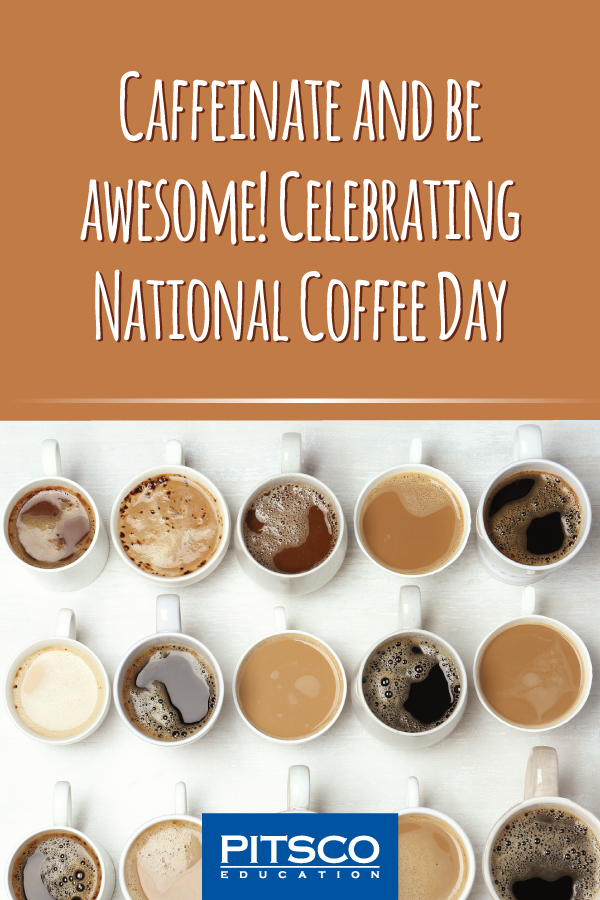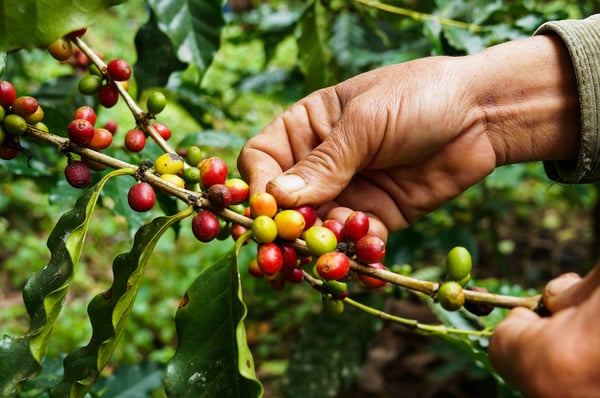Cup of joe. Java. Wakey juice. Life’s necessities. Whatever you might call this drink, September 29 is National Coffee Day. While every day is coffee day (at least for me), this holiday was created to celebrate the hot or iced beverage that brings joy to many around the world. To get your caffeine fix, try supporting one of your local coffee shops that might also be celebrating National Coffee Day by having discounted or free drinks. Check out some deals here!
Sit back, relax, and grab your favorite cup of coffee to learn about the process it takes to get that magical drink just right.
King of Coffee, Kaldi
The first trace of coffee was discovered centuries ago in the forests of the Ethiopian plateau by a goat herder named Kaldi. Legend says that Kaldi’s goats ate berries off a certain tree, and he noticed it had a stimulating effect on them, so he decided to start experimenting with those berries. Before long, he shared his findings and voilà – those berries started expanding all across the world to become the drink known today as coffee. (“The History of Coffee”)
But First, Coffee . . . Beans
Before you can open up a fresh, aromatic bag of coffee beans, those beans have to go through a long journey. You probably know what a roasted coffee bean looks like, but you might not be able to spot a coffee plant. Coffee plants are from the genus Coffea, tropical trees that have an estimated 25 to 100 different species of coffee. These trees have branches with green, waxy leaves and can grow to more than 30 feet high.
The beans that grows on these trees are known as cherries, which take nearly a year to fully mature after flowering. The plant takes five years to reach full fruit production. Each of these trees produces on average of 10 pounds of coffee! Raise your hand if you want to plant a coffee tree in your yard.🙋♀️ However, most of these trees grow best in environments with frequent rain, mild temperatures, and lots of shade, which won’t work well in most of the United States. (“What is Coffee?”)
Steps to that First-Sip Feeling
When the cherry is fully ripe, it’s finally ready to be harvested and processed for shipment. This process begins with each cherry being sent through a pulping machine that separates the outside skin and pulp from the bean. The beans then get divided by their size and weight then are dispensed into large tanks for fermentation, which takes anywhere from 12 to 48 hours. After that, all the beans have to be dried so they can be properly prepared for storage and to prevent spoilage. These beans can be either sun dried by spreading them out on tables and floors or sent through a large machine dryer.
 The beans then get sorted again by size and weight and checked for imperfections before they are loaded onto ships to be exported all across the globe. After the beans have reached our favorite stores or cafés, they begin the roasting process to get that amazing aroma. The beans are then placed in the roasting machines where they will reach up to 550 degrees Fahrenheit and will continuously be rotated to make sure they won’t burn. FINALLY, the beans then are sold either whole or ground and then brewed, after which they will wait for you to come and enjoy all the hard work that took place to make that perfect cup of coffee. ☕️ (“10 Steps from Seed to Cup”)
The beans then get sorted again by size and weight and checked for imperfections before they are loaded onto ships to be exported all across the globe. After the beans have reached our favorite stores or cafés, they begin the roasting process to get that amazing aroma. The beans are then placed in the roasting machines where they will reach up to 550 degrees Fahrenheit and will continuously be rotated to make sure they won’t burn. FINALLY, the beans then are sold either whole or ground and then brewed, after which they will wait for you to come and enjoy all the hard work that took place to make that perfect cup of coffee. ☕️ (“10 Steps from Seed to Cup”)
Sip, Sip, Hooray
Now that you know how coffee is produced, do you know if coffee is good for you?
Me, as well as more than 60 percent of people, might have a slight addiction to this drink, and it might not be a bad thing after all! There have actually been health benefits found in drinking a cup of coffee a day! Don’t take my word for it; here are a few potential benefits:
- Might help burn fat – Studies show that caffeine can boost your metabolic rate by 3-11% and is also proven to help aid in fat burning.
- Potentially lowers your risk of type 2 diabetes – Serious coffee drinkers have been found to have a 23 to 50 percent lower risk of getting type 2 diabetes.
- Might prevent you from getting Alzheimer’s and dementia – Eating healthy and exercising can help prevent theses diseases, but drinking coffee might be effective as well. Studies have found that coffee drinkers have 65 percent less chance of getting these diseases.
- Can help you fight depression – Those who drink four or more cups of coffee per day are found to be 20 percent less likely to become depressed and are happier!
Celebrate this day by bringing your coffee (filters) to the classroom to try out some of these coffee-inspired STEM activities! Coffee might be your ritual in the morning, an afternoon wake-up call, a treat in the evening, or maybe even all of the above, but make sure to get your dose of it on this day!
Need a new mug for the classroom? Check out our Pitsco Rocks coffee cup!
Resources:
www.ncausa.org/about-coffee/history-of-coffee
www. livingonthecheap.com/national-coffee-day-deals/
www.ncausa.org/about-coffee/what-is-coffee
www.ncausa.org/about-coffee/10-steps-from-seed-to-cup
www.healthline.com/nutrition/top-13-evidence-based-health-benefits-of-coffee

TOPICS: IDEAS & INSPIRATION, Culture, Science, Resources




